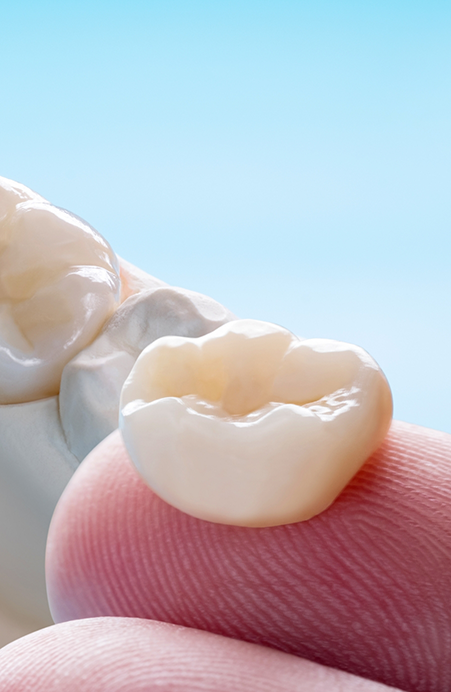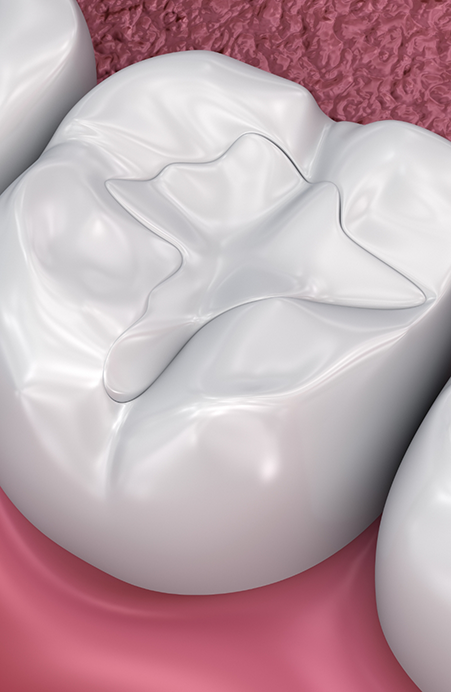Restorative Dentistry Greensboro
Where Broken and Decayed Smiles Are Made New

Being able to restore and rebuild patients’ damaged and decayed smiles is part of what Dr. Fisher enjoys most about dentistry. Focusing primarily on a person’s oral and overall health, he offers state-of-the-art services that are designed to target problem areas and rebuild smiles to look, feel, and function like new. Whether you’re suffering from a cavity or a cracked tooth, you can count on Dr. Fisher to help, so call us today.
Why Choose Dr. David M. Fisher, Jr. for Restorative Dentistry?
- Expertly Designed, Precisely Fitted Crowns
- A Dentist Who Pays Attention to Details
- Friendly, Welcoming Team
Dental Crowns

A tooth that has become broken, worn down, or otherwise damaged can leave you with low self-esteem, and it could also make speaking and chewing more difficult than it needs to be. To bring the structure back to its full size and strength, we can repair the tooth with a special cap called a dental crown, which will protect you from further dental damage and help you preserve the natural alignment and function of your jaw.
Some crowns are made of precious metal or porcelain that has been fused to metal. If you want your smile to look completely natural, though, an all-ceramic crown is the best option. The porcelain will be shaded so that it exactly matches the natural color of your other teeth. Tooth-colored crowns tend to be very durable, and they will last for a long time when cared for.
Placing a crown normally takes at least two appointments: one to prepare the tooth and the other to place the crown once it has been crafted. You won’t have to change your oral hygiene routine after receiving your crown. Simply continue to brush and floss twice a day as you would normally. Visit Dr. Fisher twice a year for a thorough cleaning and examination. These appointments will let us confirm that your restoration is still in good shape.
Learn More About Dental Crowns
Tooth-Colored Fillings

While crowns are normally needed for extensive decay, smaller cavities usually only need a filling. We use a silicon dioxide-filled plastic mixture referred to as composite resin, which can be used to replace the parts of the tooth’s structure that were lost. There are several reasons why we recommend this material over traditional metal fillings.
Composite resins can be shaded to blend in with your natural enamel, meaning most casual observers will not even realize that you have fillings unless they already know beforehand. Also, the material will bond with the tooth itself, giving the structure additional support so that it won’t break as easily in the future. Furthermore, despite not being made of metal, composite resin can last as long as traditional fillings (typically around seven to ten years). But perhaps the biggest advantage is the fact that composite resin will allow you to keep more of the natural tooth structure intact. This conservative approach to restorative dentistry tends to be better for your oral health in the long term.
Your teeth may be sensitive for a short time after you’ve received a composite resin filling. This type of restoration won’t prevent you from eating or drinking anything, but we do recommend that you exercise caution around coffee, tomato sauce, and other foods and beverages that could stain.

